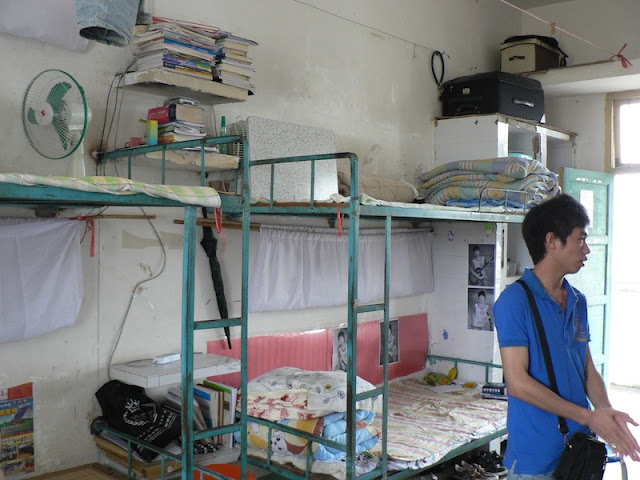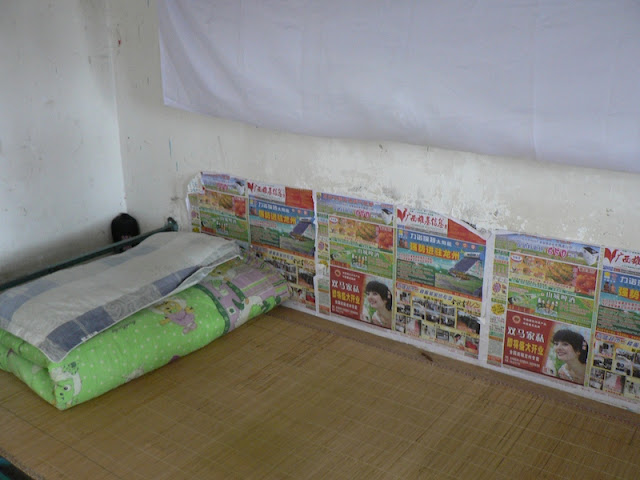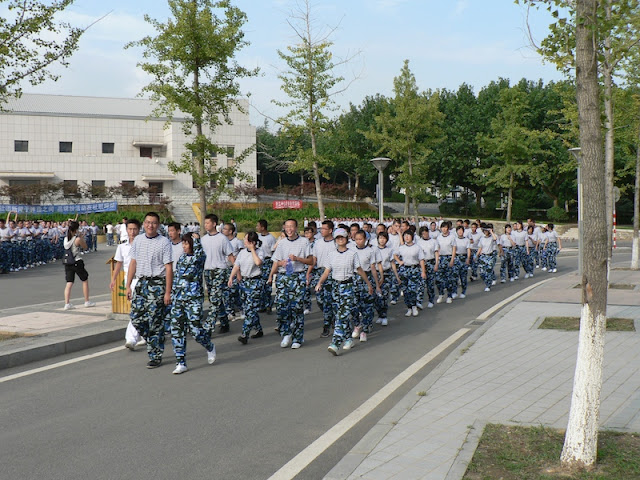In southwestern China more than a 40 hour car drive (
map) from the
Dalian Maritime University dorm room I previously featured, you could find the following dorm building at the Guangxi Normal University for Nationalities in Longzhou, Guangxi Zhuang Autonomous Region.
But start driving now, because this oldest campus of the school will soon be closed. The faculty and students who currently remain will be transfered to a newer campus a few hours away in the outskirts of Chongzuo city.
Nevertheless, an 8 bed room I visited in the dorm is similar to many others I have seen in China.
Despite Longzhou being in a southern climate with hot, humid summers, the rooms do not have air conditioning--typical for the dorms I have visited in China. I could point out several other things, such as the various shelving units, but instead I want to focus on the reddish paper next to the bed. Is it decoration? Well, it can be, but it also serves a more pragmatic purpose. Here is a similar example next to another bed in the same room.
The paper has been placed there to prevent a white dust from coming off the wall if a student rubs against it while sleeping. I have seen dorms elsewhere in China where students faced the same problem and employed the same strategy. This seems consistent with many other signs I have seen of apparently poor construction quality in university buildings, even newer ones, in China. A story for another day...
Another familiar aspect of the dorm was the hanging power strip.
Finally, the dorm room did have one piece of luxury not found in many other Chinese dorm rooms, including the one at Dalian Maritime University.
This dorm has its own bathroom.
The squat toiles that can be seen is typical for the dorms I have visited in China. They are also very common in many of the homes I have visited, but that can vary depending on region. I could easily write several posts on toilets in China. At this point, I will just say that I have seen renovated expensive restaurants with shiny new squat toilets and that there are several arguments for their superiority.
Finally, the bathroom also included a shower:
As would be typical for private bathrooms in dorm rooms, the shower was in the same space as the toilet. This arrangement can also be found in many homes in China. And like squat toilets, it has its own advantages and disadvantages.
That's all for this dorm room. More on showers later. You might be surprised where they can be found if they're not in the room. And if you are looking at the above photo and wondering about hot water, well, that's another story for later too.
Soon, I will share a story about some of the students at this school. Not only are they familiar with school dormitories, but factory dormitories as well.
UPDATE: See
here for that story.



















